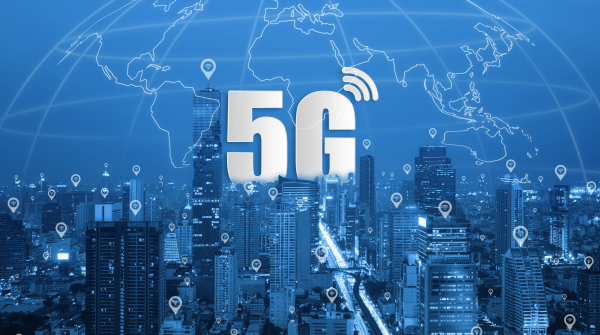Expert Viewpoint: The Future Value and Challenges of 5G Commercialization


The real "smart city" is getting closer and closer to us. Where we used to build cars that simply knew their surroundings, now we can create a fully connected ecosystem where 5G enables vehicles to “talk” to pedestrians, other vehicles and even infrastructure in real time to prevent potential collisions or other events. These capabilities are even more enhanced when self-driving cars are factored in, thanks to 5G.
In 2021, we will witness explosive growth in the number of 5G subscribers. Globally, the number of global 5G subscribers increased from less than 200 million in 2019 to 660 million by the end of 2021. While the previous generation of technology was driven by mobile internet usage, 5G's growth is primarily driven by connected and autonomous vehicles. This is not surprising, as 5G is the perfect technology to meet the low latency and high throughput requirements of a new era of connected cars.
Nonetheless, these features have not been able to reach consumers on a large scale.
This year we must address the challenges of commercialization and bring these connected experiences to consumers in a unified way. Unlocking the full value of 5G in the automotive industry, for example, will require cross-industry collaboration, robust infrastructure and trust-building regulation.
Partnerships
A strong partner network is critical to driving innovation in telematics. To make automotive 5G mainstream, there is an urgent need for collaboration between mobile network operators, OEMs, infrastructure developers and government regulators – all working towards a single goal of commercialization.
The magic of 5G lies in creating a fully connected experience. To do this, functions, applications and services need to work closely together. Developing these innovations in isolation will not drive innovation and will not benefit consumers. Instead, it will create multiple disparate solutions that are rolled out piecemeal across the industry, creating confusion and further driving true innovation.
Infrastructure is the key
For 5G commercialization to be successful, we need robust and reliable infrastructure. Infrastructure deployments in 2021 will be significant. Worldwide 5G network infrastructure revenue is expected to grow from $13.7 billion in 2020 to $19.1 billion in 2021, according to Gartner's latest forecast. Edge computing solutions such as roadside units (RSUs) are especially important for enabling truly connected infrastructure.
By bridging the latency gap between today's networks and what 5G offers, RSU enables real-time updates and communication between connected cars, city and town infrastructure, and pedestrians and cyclists. Still, progress has yet to be made. To achieve mass adoption, we need to ensure mass availability to all consumers.
Regulation drives trust
Promoting consumer trust and respect for 5G mobile services is necessary to adopt 5G mobile services, and regulation is critical to driving this development. This means overseeing the deployment of 5G infrastructure and its application in smart cities. In the United States, for example, the FCC is working to modernize outdated 5G regulations to promote digital opportunity for all communities, such as through the 5G Rural America Fund. Prioritizing standards, responsible practices and adoption paths will ensure effective solutions and limit dangers that may hinder innovation.
The commercial future of 5G
When 5G technology goes beyond small ecosystems, its advantages are significantly greater, and the automotive industry is ready to test it. Imagine streets packed with vehicles that "see" blind corners and intersections, avoid pedestrians and cyclists, respond to emergencies immediately with 360-degree awareness of the traffic network, and interact with other vehicles Share information about unsafe road conditions. Not only are these features a great option, they're a necessity in our efforts to improve street safety and build smarter cities.
A commercialized 5G future also means complete personalization of our vehicles. In addition to leveraging driver data for audience insights and monetization opportunities, automakers will soon be able to apply these insights to create valuable personalized driving experiences. These personalized experiences could include connecting driver habits to make suggestions about nearby activities, shopping, dining, and more — as well as additional car services, upgrades, and personalization features.
Fortunately, we are seeing early signs of commercialization of MEC (Multi-access/Mobile Edge Computing) or multi-access edge computing in the US. MEC platforms, such as HARMAN Savari's industry-first MECWAVE, allow data to be processed and stored closer to the user, significantly reducing latency. Think about how 5G could work on mobile devices with minimal latency -- that should be the norm for vehicles as well.
At present, MEC is the fastest and fastest way to promote the reform of 5G access, and temporarily acts as a commercialization booster. The promise of 5G in the automotive space is ready to be realized, but before we can achieve a long-term synchronized 5G ecosystem of this scale, we must first expand partnerships, infrastructure and regulation. Only then can we witness the true potential of 5G.